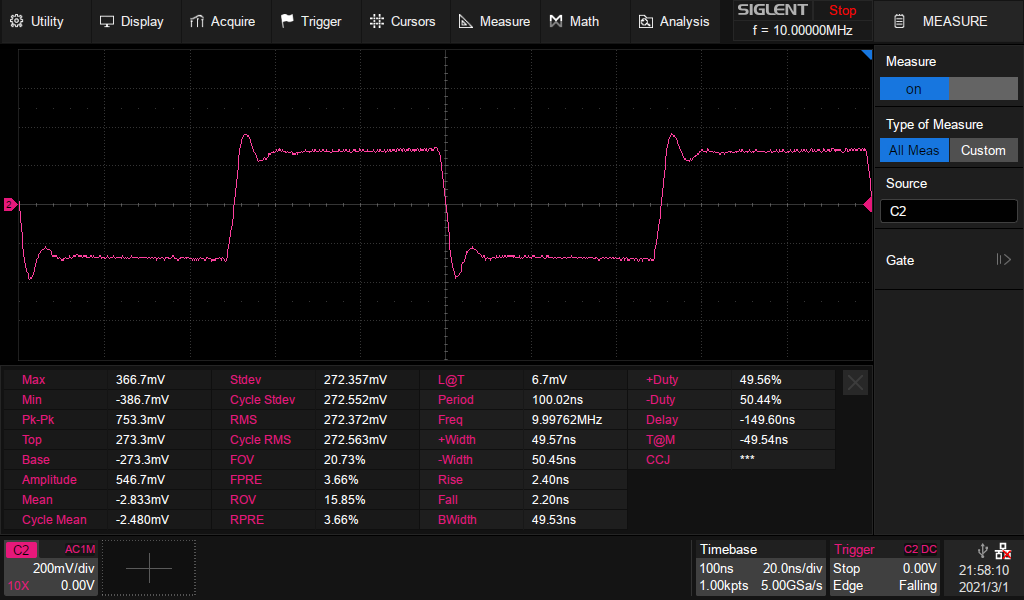Other Parts Discussed in Thread: LMX2594
We've been having some issues with phase noise that is higher than the simulated output, we have narrowed down the source to the LMX2820. As a test we put in a 10 MHz CMOS output crystal and configured the device to output 6 GHz. The 10 MHz reference has the following phase noise specifications:
100 Hz -123 dBc/Hz
1000 Hz -142 dBc/Hz
10000 Hz -149 dBc/Hz
100000 Hz -150 dBc/Hz
1000000 Hz -150 dBc/Hz
10000000 Hz -150 dBc/Hz
In the PLLatinum simulation (with a 2nd order loop filter: C1 3.3nF, C2 47nF, R2 100 Ohm) with an output frequency of 6GHz we get a simulated noise output of:
100 Hz -67 dBc/Hz
1000 Hz -86 dBc/Hz
10000 Hz -93 dBc/Hz
100000 Hz -93 dBc/Hz
1000000 Hz -119 dBc/Hz
10000000 Hz -151 dBc/Hz
But when we measure the output we get ~20dB higher numbers in the 1kHz to 100kHz range:
100 Hz -60 dBc/Hz
1000 Hz -66 dBc/Hz
10000 Hz -74 dBc/Hz
100000 Hz -102 dBc/Hz
1000000 Hz -120 dBc/Hz
I understand that this is not an ideal setup, but this is a test to identify the source of the high phase noise. In the real setup we have a high end 100MHz reference source feeding into a LMX2594 which feeds into the LMX2820.
Simulated file project (both PLLatinum, and TICS Pro files), reference noise, schematic and measurement data attached for reference.


